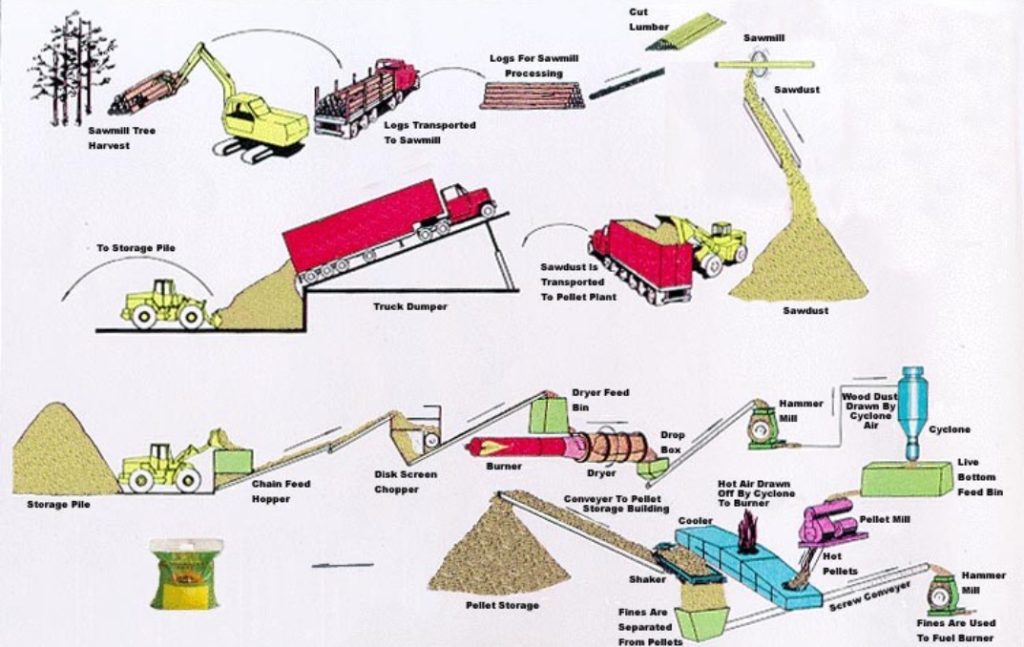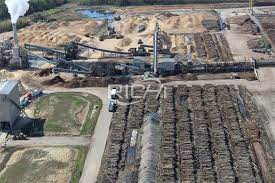Wooden Pellets, biomess pellets, – fuel pellets, have been known for a long time. Initially, devices for the formation of vegetable raw materials were used for granulating straw, hay, animal feed in animal husbandry.In our case, pelletizers help prepare various vegetable fuels for ease of transportation and combustion in wooden pellet automatic boilers, pellet stoves, and wooden pellets fireplaces running on pellets we ll focus on Pellet manufacturers at Europe

Pellet Manufacturers are located all over Europe but best rated wood pellets are produced at Turkey, Ukraine.Many countries subsidizing wooden pellet production and use wooden pellet.Because of using energy crisis
We are as “OZON group” which we have got 3 pellet plants
All over Turkey producing best value wood pellets that we can say that wood pellets cheapest prices .
Our contact info; www.ozonpalet.com , info@ozonpalet.com, 00 9 0532 393 8426.
Pellet manufacturing stages

The whole pellet manufacturing process can be conditionally divided into six stages:

Raw material preparation and grinding. All raw materials are divided into 2 groups – pure wood waste and waste with bark. This division is necessary for the production of lower quality pellets.Waste uneven in fractions – slats, slabs are crushed to sawdust. First, the raw material is chopped to the state of chips, and then the size of the fraction is adjusted to the required size with a hammer crusher. Usually the final fraction at this stage is sawdust less than 4 mm.
2. Drying of crushed raw materials
The sawdust obtained at the previous stage enters the dryer drum. The task at this stage of preparation of raw materials is to bring the moisture content from natural 40-60% to the moisture content required for granulation 8-14%. Drying is carried out with hot air at a temperature of about 400C. Usually, the raw materials are dried to bring the humidity to the required level immediately before granulation. This stage is very critical, when the drying temperature is exceeded, an important component of wood, lignin, which is responsible for the strength characteristics of fuel pellets, can be destroyed.

4. Pelletizing
The granulator itself is the main production equipment. The granulator consists of a motor, a matrix (there are flat and drum types), rollers for punching raw materials, and knives for cutting finished granules. You can change the diameter of the granules by setting the matrix with the required hole diameter.
The rollers push the prepared sawdust through a matrix with holes and heat the raw material due to mechanical friction. Upon exiting the matrix, the formed pellets cool down, the lignin polymerizes and then is cut off with an automatic knife.

3. Hydration
Sawdust is pressed into pellets due to mechanical adhesion and polymerization of wood lignin. The latter needs a combination of factors such as pressure, temperature, water. For efficient operation, before pressing, the addition of steam and water to the crushed raw material is required. Softwood sawdust requires only water. Without this moisture, the granules will be of high quality, but the dies and rolls will wear out quickly, because heating and softening occurs due to mechanical friction.

5. Pellet cooling
In the pelletizer, raw materials can be heated up to 100C only due to friction, therefore, during the production of pellets, their cooling is provided, where the pellets acquire the desired hardness.
6. Packing
Produced granules are packaged in large bags – “big bags”, which have a capacity of 500-1000 kg., or more consumer packaging – bags of 15-25 kg. Industrial use involves the release of pellets in bulk into special bunkers.
Pellets are recommended to be stored in dry, ventilated areas. The temperature is not critical. It is important that the pellet bags do not come into contact with the ground or concrete floor. The optimal placement of pellets during storage is on wooden pallets or boards.
The story would not be complete if we did not mention the rare and labor-intensive torrefied (those burned without oxygen) pellets.

During torrefaction, solid biomass is burned without access to oxygen at a temperature of 200-300C. These pellets are already called bio-charcoal and they have the following advantages: they do not require special storage facilities, they have better combustion performance, close to coal, they do not rot, swell or mold.